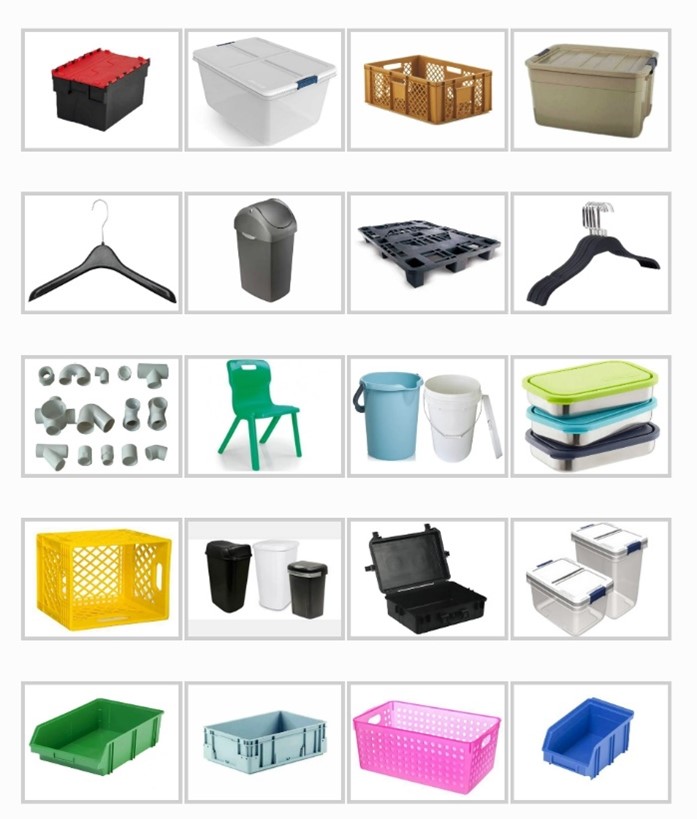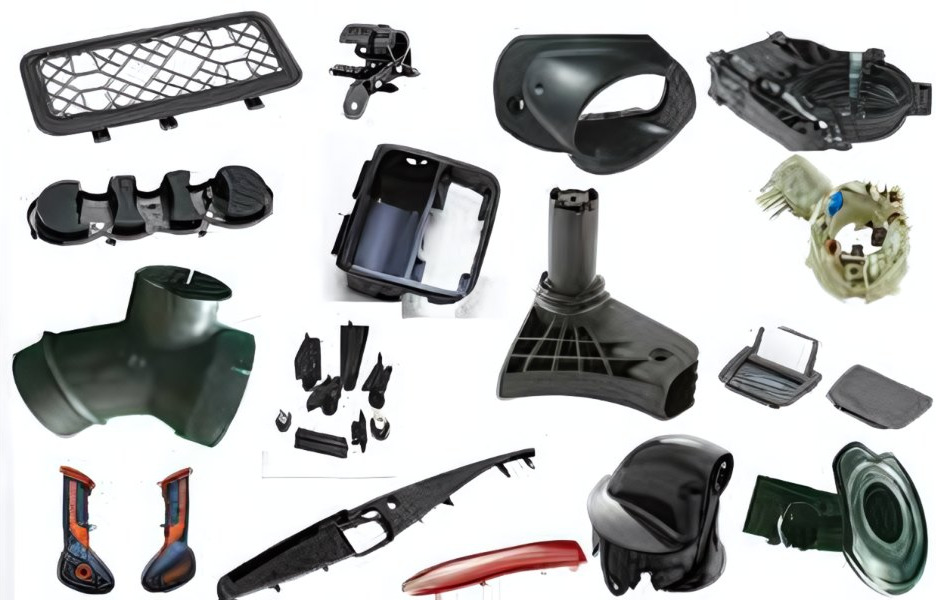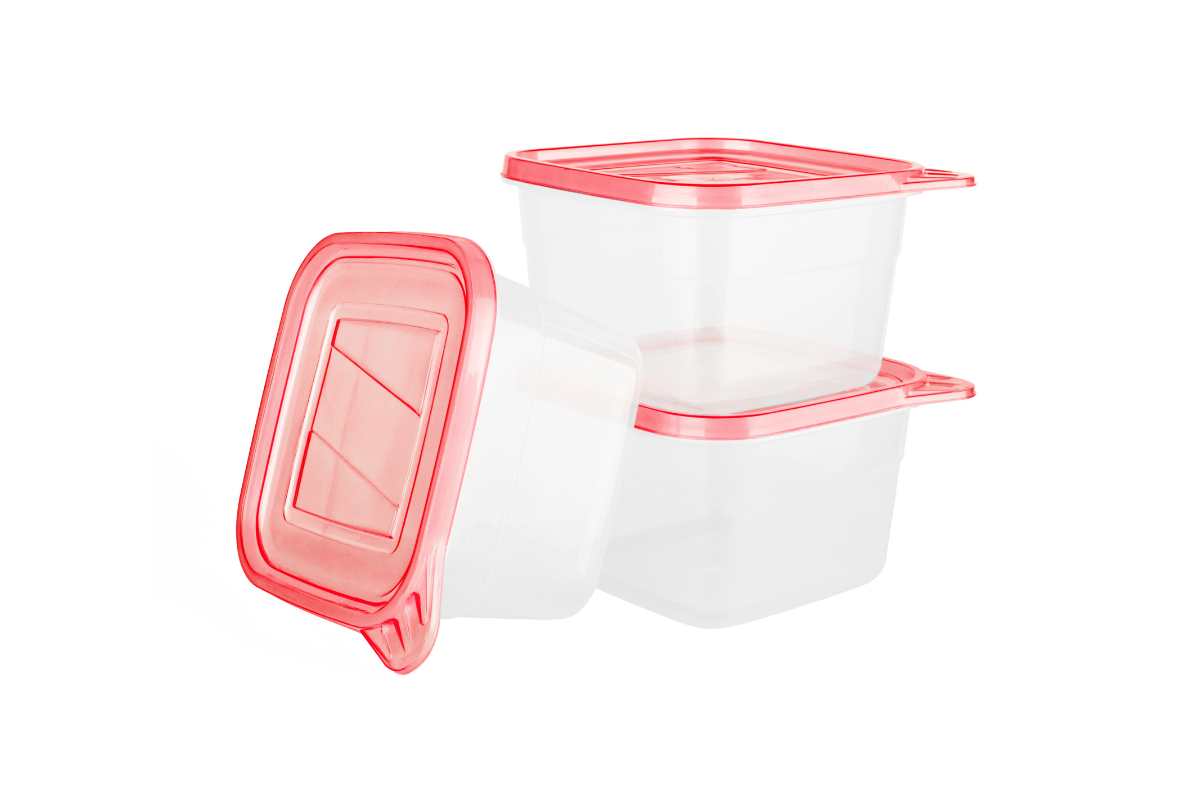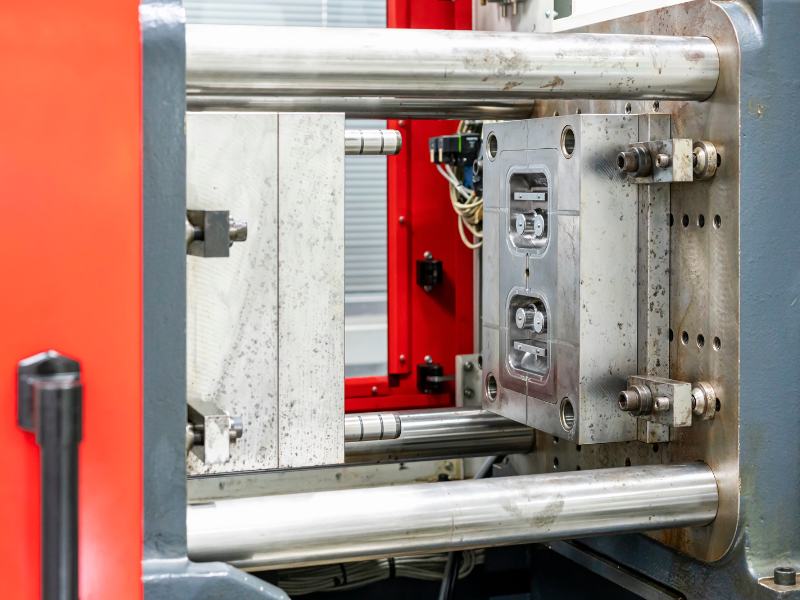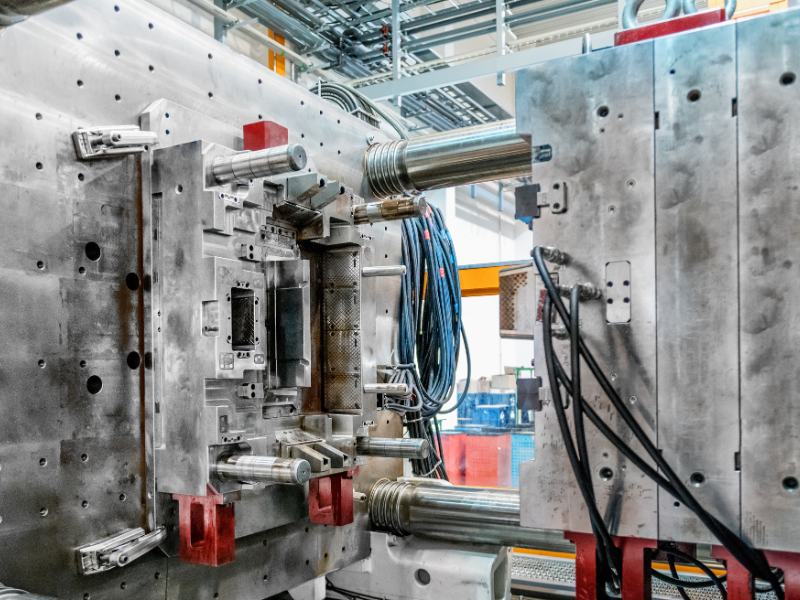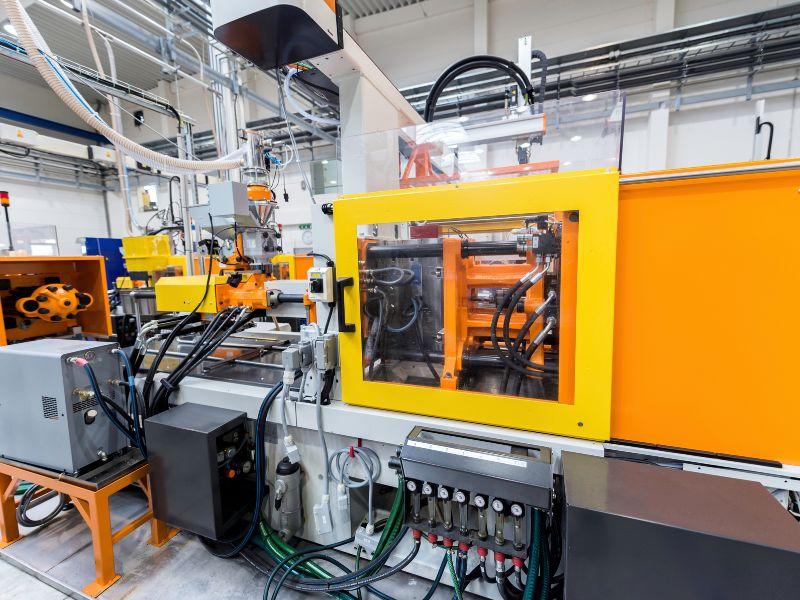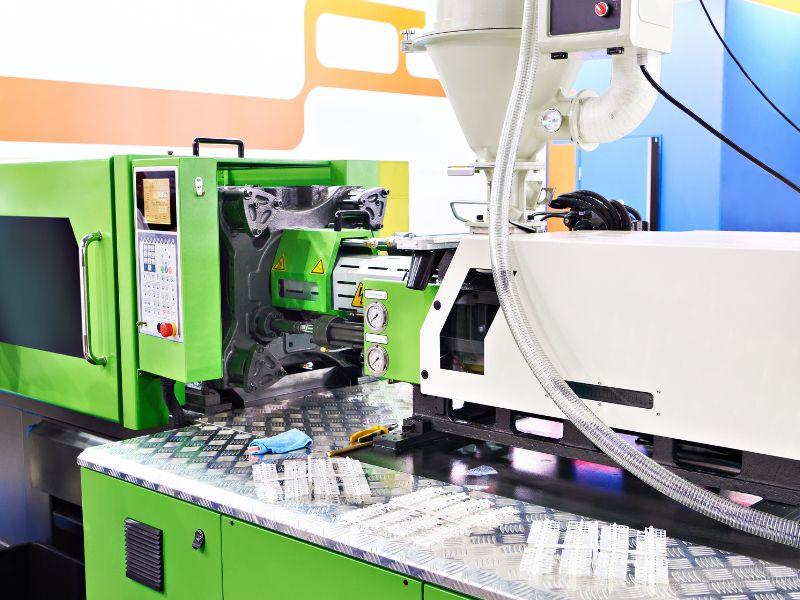Plastic and rubber are two significant inventions of human civilizations. You are using them for most of your daily work. The mobile phone you are using has plastic covers. Also, the sole of your shoe is made specifically for your shoe model. Both of these are custom-molded products.
You can generally create custom-molded products in various ways. The type typically varies based on the shape and complexity of the product design. Some of these methods are injection, extrusion, and blow molding.
Let’s say you want to launch a new product in the market. Your products feature a unique look and improved performance. However, when you make them, they will be categorized as custom-molded products.
You can do it by a custom molding company or use your custom mold. In this case, Dong Guan Sincerer Tech offers you a wide range of convenient solutions. The company also provides many assembly services.
However, this article briefly explains custom-molded products. We will mainly focus on two materials: plastic and rubber. This article will give you helpful information to apply to your business. New entrepreneurs can get an idea about this market and know how to make profits.
What Are Custom Molded Products?
Custom-molded products are usually made from specific molds. They are not standard or regular molds used to create standard products. Standard means you can get similar shapes or alternatives in other brands. Custom-mold products are always unique and don’t have any replacements.
For example, you may find new toy designs every month or year in a toy market. Do you know how they are made? A toy company first creates the digital design and analyzes whether it can succeed in the market. They conduct a few rapid prototyping until the product meets all the requirements. Later, the company creates custom molds for new designs. Finally, they create the products. In this way, most custom mold products are made.
You may observe similar processes in other industries. Whatever the products are, their main job is to improve the function of the existing ones. Let’s know about some of their benefits.
- Custom-molded products are usually unique, so their market demand is very high. You know people always prefer unique things. Custom-mold products also last longer.
- Custom-mold products allow you to create various designs. In contrast, standard products remain limited in these areas.
- Custom-molded products can improve the performance of previous models. Although the cost will be higher, you will get better customer response.
- Custom-mold products ensure a perfect fit in a variety of applications. For example, we sometimes need custom products to ensure a snug fit in manufacturing parts. An excellent example is various rubber gaskets and seals.
- Custom molded products also play a vital role in enhancing external beauty.
Popularity of Custom Molded Products in Manufacturing
As you know, custom-molded products offer excellent versatility and suitability for various uses. Because of this, you will notice their popularity in many industries. The plastics and rubber industry is particularly noteworthy in this regard.
Custom-molded products are widely popular in the automotive industry. Dashboards, bumpers, and interior parts are noteworthy plastic parts. Seals, gaskets, and different hoses are among the rubber products. Each plays a significant role in a vehicle’s critical function.
You can also find custom-molded products in household items. Kitchen utensils, storage boxes, water jugs, and dustbins are noteworthy examples. People always like custom designs and features. Therefore, the demand for these products is high in this sector.
The electronics industry also significantly uses custom-molded products. They use plastics more than rubber. Plastic covers, wires, insulators, and small parts are common examples. People need them in their phones, laptops, keyboards, fans, and ACs.
Even in daily commodities, people use a lot of custom plastic designs. For example, luggage, eyeglass frames, and water bottles are typical.
The toy industry is another notable sector. Toys generally come in many styles, and kids love unique things. They try to find their dream in toys. Note that the factory uses a unique mold for each design. Both plastic and rubber toys are popular in this market. As you know, parents always want their kids to know about the newest things. Therefore, the demand for custom designs is very high in this case.
Additionally, custom-molded parts are in high demand in various other fields. Development and new ideas are the main parts of this.
Introducing Custom Molded Plastic Products
“Custom” means the products are unique, with no similar alternatives. “Molded Plastic Products” means these parts are made using plastic molding. Custom-molded plastic products are specially designed to meet unique requirements.
Custom plastic parts can be anything. You can decide their shapes, sizes, textures, or even materials. This ability to customize is valuable in the car, medical, and consumer goods industries.
As seen in the first section, custom plastic parts offer many benefits. However, they cost more than standard items. Usually, making plastic dies adds to the total cost. Also, making unique parts takes a lot of time. It takes longer because you have to create a prototype, test it, and then make the die.
| Custom Molded Plastic Products | Specific Products |
| Car components | Dashboards, interior trims, Mirror housings, air intake systems, seat frames, steering and wheel parts |
| Electronic Housings | Casings for smartphones, laptops, and any electric gadgets |
| Medical Equipment | Tubes, syringes, catheters, lancets |
| Packaging Materials | Bottles, storage boxes, water tanks |
| Industrial Parts | Fan blades, impellers, plastic fittings, tanks, enclosures |
| Household items | Kitchenware, tools, spice boxes, appliance covers |
| Toys | Action figures, board games, toy cars and vehicles, educational items, sports equipment |
| Agriculture items | Spray container, plastic egg tray, floating aerator |
What Are Plastic Dies?
Before learning how to make plastic parts, it is necessary to understand plastic dies. Plastic dies are special tools that give shape to plastic parts. They are usually made of tool steel, a robust and durable metal. Tool steel has many types, but the H13 tool steel is the most common for making plastic dies.
Making plastic dies also needs careful attention. First, engineers design the actual part. Then, they create a prototype of the part. Later, based on the shape of the part, they make the plastic dies. Then, various surface treatments are employed to achieve the highest accuracy. Sincere Tech, in this case, gives a tolerance of up to ±0.01mm. Finally, the plastic dies are tested and moved for the final production.
How to Make Custom Plastic Parts?
Custom-molded plastic parts can be made in various ways, each with a unique purpose. This diversity generally arises from the many forms of plastic products.
Some are hollow, while some are solid. Also, some are profile-shaped, while some are rigid small parts. Therefore, the right way depends on the plastic parts and their design. It typically considers the size, shape, and purpose of the part.
Method #1: Custom Injection Molding
Custom injection molding is the most common plastic parts manufacturing process. The process injects the molten plastic into the dies. When cooled, it gives various plastic shapes. Because of this, the process is termed the plastic injection molding process.
How do you distinguish whether the part is made from injection molding or other types? It is simple. When you hold plastic parts, if you see a parting line, the plastic part is made from injection molding.
Going in-depth, you will find injection molding of three major types. (1) Hydraulic injection molding inserts the molten plastic by hydraulic forces. (2) Electric injection molding inserts the molten plastic by electrically produced forces. (3) Hybrid injection molding uses both technologies.
How Does Custom Plastic Injection Molding Work?
Custom injection molding starts by choosing the suitable material. This method uses many plastic grades, including PC, ABS, PP, PVC, LDPE, and HDPE. The right type typically depends on the application requirements. For example, polycarbonate can work at high temperatures, while ABS is easy to process.
The raw materials are often supplied in pallet form. A pallet is a small and uniform piece. An operator first puts these pallets into the hopper. Then, the hopper automatically passes them to the heating chamber. This chamber melts the pallets and pushes them into the dies using screws. This pushing requires a lot of pressure to ensure the liquid plastic reaches every part of the die.
Once the mold is filled, the cooling phase begins. There are several types of cooling, either air or water cooling. Finally, the operator presses the ejection pin and removes the custom injection molding part from the die. In this way, plastic factories make hundreds and thousands of custom-molded plastic products.
Advantages of Custom Injection Molding
- The high pressure typically guarantees accurate results.
- Custom injection molding is the best method for making complex plastic parts.
- You can typically work with any plastic. But you must be careful with the defects when cooling. Some plastics show shrinkage during solidifying.
- The die always ensures the consistent quality of the product.
- It produces almost no waste.
Limitations of Custom Plastic Injection Molding
- Custom injection molding is suitable for small—to medium-sized components. Larger sizes require larger dies, which can be expensive.
- Tooling cost is relatively higher.
Method #2: Blow Molding
You can also create custom-molded plastic products by blow molding. As the name suggests, this method blows molten metal into a mold to make it hollow. You can make bottles, tanks, and big containers this way. Because of this, people call this process blow molding.
There are several types of blow molding: extrusion, injection, and stretch blow molding. Blow molding creates all kinds of hollow containers.
Benefits of Blow Custom Plastic Molding
- This method is ideal for creating hollow parts. The produced custom-molded products are also light.
- Blow molding is a cost-effective solution for high-volume orders.
- It also needs less upkeep costs.
Limitations of Blow Custom Plastic Molding
- This method can only produce hollow parts.
- Blow molding is only suitable for simple designs.
Method #3: Rotational Molding
Rotational molding is also used to create hollow custom-molded products. Interestingly, people also call it roto-molding. In the factory, first, an operator places the powder plastic in the mold. Then, he continuously rotates and heats the mold. This step is mainly automated. For smaller parts, some workshops may do manual rotation.
Because of heat, the powder plastic melts down. On the other hand, the rotation allows it to reach all the surfaces. The combination of these two factors maintains a uniform distribution of molten plastic.
Benefits of Rotational Molding
- Ideal for more oversized custom-molded products.
- Roto molding is ideal for low-volume orders.
- This method doesn’t produce any waste.
Limitations of Rotational Molding
- Roto molding is not suitable for smaller hollow plastic parts.
- This method is less accurate.
Method #4: Compression Molding
Compression molding is also widely used in custom-molded product making. In this method, first, an operator places the pre-heated plastics inside the mold. Then, he closes the other half of the mold. At this stage, the machine heats and compresses the plastic. The plastic gradually melts and forms the desired shape.
After cooling, the operator gently removes the part. This method is ideal for creating many car, aircraft, and machine parts.
Benefits of Compression Molding
- Compression Molding needs low tooling costs.
- It is suitable for high-strength products.
- This method creates long-lasting custom-molded products.
- Compression molding also produces less waste.
Limitations of Compression Molding
- This method is not suitable for high-volume orders.
- It can not produce complex plastic parts.
Introducing Custom Molded Rubber Products
Custom-molded rubber products are unique rubber parts. In general, you won’t find them in the market. They are essential in many fields. People prefer custom-made products to fit unique specifications. You will need them when standard rubber products don’t meet your needs.
The car industry needs special gaskets, seals, and vibration dampening. Planes also depend on rubber to handle high temperatures and pressures. Custom rubber parts are prevalent in many sealing applications. Besides, the toy industry also needs rubber. Therefore, you can realize how huge this market is. You have many opportunities to start your business in it.
Custom-molded products have many benefits, but custom rubber parts have some limitations. The main limitation is the tooling cost. Every rubber product shape has a unique die, and creating dies requires time, effort, and money. Besides, working with complex design might be challenging as well.
How to Choose the Right Rubber for Your Project?
Rubber comes in many types and grades. Some typical names are natural rubber, NBR, and neoprene. Each has its unique benefits. Natural rubber is excellent for elasticity. It is cheap and easy to get.
On the other hand, NBR and neoprene work great against chemicals and oils. EPDM is suitable for weather resistance. And silicone can resist high heat.
When picking a suitable rubber material, consider a few things. First, consider the environment where you will use your custom rubber products. Does it involve UV rays, extreme weather, or high temperatures? Then, check the rubber’s features. Third, how often will your rubber item be used? Lastly, look at the prices and see how they fit with what you need for the project.
How to Make Custom Molded Rubber Parts
You can typically create custom-molded rubber parts in various ways. Each method offers a unique way to shape your rubber parts.
Method #1 Rubber Injection Molding
Rubber injection molding is a comparatively fast way to create various custom-molded products. First, an operator inserts the rubber pallets into the hopper. Then, the hopper automatically transfers it to the heating chamber. Inside the heating chamber, the rubber pallets gradually melt into liquid rubber.
Then, the injection chamber pushes this molten rubber into the dies. The pressure must be sufficient to reach every corner of the mold. Once cooled, the custom-molded products are removed. Finally, the operator performs some additional finishing, like cutting extra parts.
Rubber injection molding is ideal for creating complex rubber parts. However, this method can not make hollow tubes or containers. For hollow parts, you can use extrusion methods.
Method #2 Rubber Compression Molding
Rubber compression molding is a more straightforward process. In this method, an operator first places the pre-heated rubber compound inside a mold. Then, he closes the mold. When he starts the machine, it automatically heats the compound and compresses towards the edges. In this way, the hot rubber compound gets the final shape.
Compression molding is typically suitable for making bigger-size parts. However, it is not the best method for making complicated parts. Rubber mats, grommets, and big seals are all common examples. This method is a cost-effective solution.
Method #3 Rubber Transfer Molding
This method, also known as the hybrid method, combines injection and compression molding. To understand the process clearly, you must know what transfer molding looks like.
Typically, a mold consists of two halves: one remains still, and the other moves. In transfer molding, one half contains a chamber called the “pot. ” If you look closely, you will find small sprues from the “pot” to the mold.
Now, an operator puts a pre-heated rubber compound in the “pot. ” Then a plunger pushes it. The molten rubber travels through sprues and reaches every corner of the mold. So, you can see that both compression and injection methods have been used. Because of this, the technique is called hybrid molding.
The best thing about this method is that you can fill multiple molds simultaneously. When a plunger pushes the rubber compound, it fills all the molds equally. As a result, you can create more custom rubber parts. Therefore, this method is suitable for large-volume orders. Rubber sandals, toys, and seals are made through this method. Since it can produce more products at a time, it reduces manufacturing costs, too.
Frequently Asked Questions
How much does a custom injection mold cost?
A custom injection mold may cost, on average, $1,000 to $5,000. The price typically depends on the complexity, size, and material. Simple molds for small parts are generally less expensive. On the other hand, the oversized mold may cost up to $80,000. The material used in the mold may also affect the total price.
How Profitable Is Injection Molding?
Injection molding can be highly profitable, especially for large quantity orders. Typically, this process takes 2 seconds to 2 minutes to complete one cycle. The time depends on the size and density of the final part. If you take an average of 1 minute for each product, you can complete 60 cycles per hour. Therefore, injection molding can be a profitable business.
What is the strongest plastic mold?
Polycarbonate, or PC, is famous for its high-impact resistance and longevity. It can be used to make the most rigid plastic mold.
Polycarbonate can withstand heavy loads, high heat, and a few chemicals. Because of these properties, PCs are prevalent in making many valuable items. For example, safety helmets, eyewear lenses, and car components are noteworthy.
What is the difference between plastic and rubber injection molding?
The main difference lies in using pressure and temperature during injection molding. Rubber injection molding applies more heat and pressure to the mold cavity. On the other hand, plastic injection molding typically uses less pressure. During cooling, rubber needs constant pressure, while plastic doesn’t.
Why is injection molding better than compression molding?
Injection molding is generally faster than compression molding. It usually takes 2 seconds to 2 minutes per plastic or rubber part.
Compression molding, on the other hand, may take 1 minute to 10 minutes. Faster production leads to more output, which means high efficiency.
Final Thought
The demand for custom-molded products is very high in the modern world. We love unique things, and they offer tailored solutions for that. Because of this, people widely use them in a variety of applications.
Custom-molded plastic products are custom plastic parts. People need them in household items, electronic gadgets, and car parts. PC, ABS, PVC, and PP are some popular plastic materials.
Custom-molded rubber products are custom rubber parts that we also need daily. Examples are custom-sized seals, gaskets, rubber toys, and household items. Natural rubber, NBR, neoprene, and EPDM are typical in this case.
When making all these, you need high-quality dies. Dong Guan Sincere Tech is giving you that opportunity. We offer a range of services, from mold design to custom die-making. If you have any questions regarding mold design and manufacturing, please get in touch with us.



